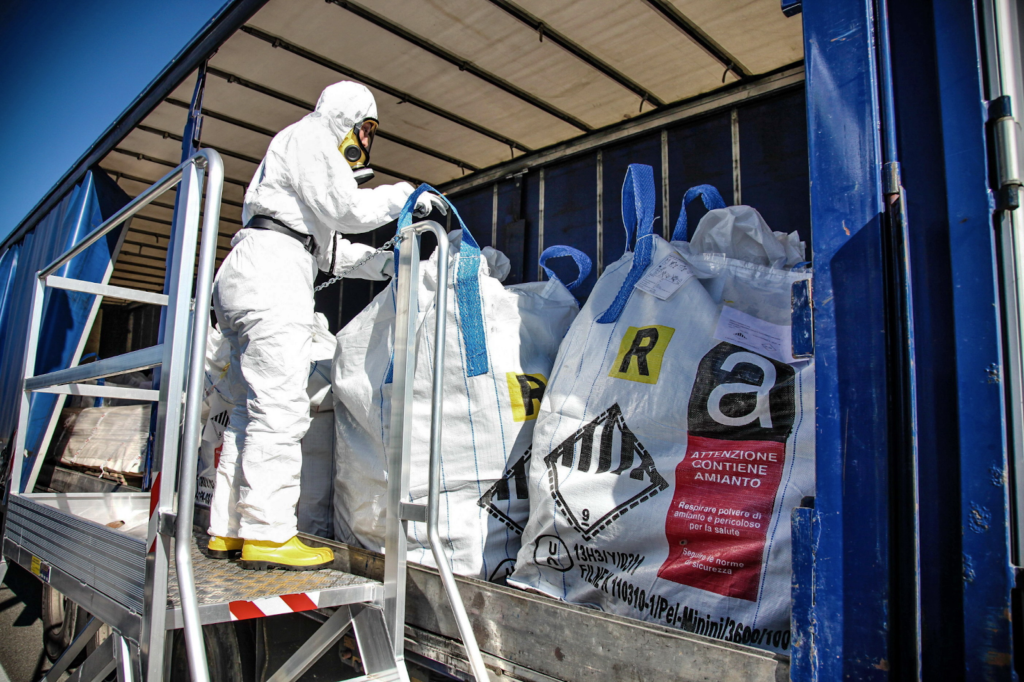Asbestos, once hailed for its durability and heat resistance, was commonly used in building materials throughout the 20th century. Unfortunately, it was later discovered that asbestos fibers pose serious health risks when inhaled, leading to conditions like asbestosis, lung cancer, and mesothelioma. Despite its dangers, asbestos can still be found in many homes and buildings, especially those constructed before the 1980s. Understanding where asbestos might be lurking in your property is crucial for ensuring safety and preventing exposure. For those in the area, conducting Asbestos Surveys in London can be an effective way to identify and manage asbestos-containing materials safely, protecting both health and property.
Asbestos in Roofing Materials
One of the most common places asbestos can be found is in roofing materials. Asbestos was often mixed with cement to create durable, fire-resistant roof shingles and tiles. These materials were widely used because of their ability to withstand harsh weather conditions. Unfortunately, as these materials age and become damaged, they can release asbestos fibers into the air, posing a risk to anyone nearby. If your home or building has an older roof, it’s wise to have it inspected by a professional to determine whether asbestos is present.
Asbestos in Insulation
Asbestos was extensively used in insulation materials due to its excellent heat resistance. It was commonly found in pipe insulation, attic insulation, and even wall insulation. Vermiculite insulation, in particular, often contained asbestos. This type of insulation was used in many homes before the dangers of asbestos were widely recognized. Disturbing asbestos-containing insulation, whether during renovations or simply through wear and tear, can release harmful fibers into the air. Therefore, it’s essential to be cautious and seek professional advice if you suspect your insulation may contain asbestos.
Asbestos in Flooring
Another area where asbestos may be present is in flooring materials. Asbestos was commonly used in vinyl floor tiles, adhesives, and backing materials. These flooring materials were popular in both residential and commercial buildings due to their durability and fire resistance. However, as they age, they can become brittle and start to break down, releasing asbestos fibers. Even simple activities like sanding or removing old tiles can disturb the asbestos and cause it to become airborne. If you’re planning on renovating or replacing old flooring, it’s important to test for asbestos before proceeding.
Asbestos in Walls and Ceilings
Asbestos was also commonly used in various wall and ceiling materials. It was often added to plaster, drywall, and textured coatings to enhance their fire resistance and durability. Textured ceilings, often referred to as “popcorn ceilings,” were particularly popular in homes built before the 1980s and frequently contained asbestos. Over time, these materials can deteriorate, especially if they are disturbed during remodeling projects. This can lead to the release of asbestos fibers, putting occupants at risk. If your walls or ceilings show signs of wear or if you’re planning renovations, it’s crucial to check for asbestos.
Asbestos in Pipes and Ducts
Pipes and ducts are other common areas where asbestos can be found. Asbestos was often used to insulate pipes, especially those in older heating systems. It was also used in the construction of ductwork, particularly in commercial buildings. Over time, these materials can deteriorate, and any disturbance, such as maintenance or repairs, can release asbestos fibers. If your building has older pipes or ductwork, it’s essential to have them inspected for asbestos to ensure the safety of everyone who uses the space.
Asbestos in Cement Products
Asbestos cement products were widely used in the construction of homes and buildings. These products included cement sheets, pipes, and even some types of siding. Asbestos was added to cement to improve its strength and resistance to fire and water. While these materials are generally stable, they can release asbestos fibers if they are damaged, drilled into, or cut. It’s particularly important to be cautious when working with older cement products, as they may contain asbestos.
Asbestos in Fireproofing Materials
Fireproofing materials are another area where asbestos was commonly used. Due to its heat-resistant properties, asbestos was often added to sprays and coatings used to fireproof steel beams and other structural elements in buildings. These materials were applied to prevent fires from spreading and to protect the structural integrity of buildings. However, over time, fireproofing materials can degrade, especially if they are exposed to moisture or physical damage. When this happens, asbestos fibers can be released into the air, posing a risk to building occupants.
Asbestos in Older Appliances
In addition to building materials, asbestos was also used in some older appliances. For example, it was often used in the insulation of furnaces, stoves, and water heaters. This was done to provide heat resistance and improve the safety of these appliances. However, as these appliances age, the asbestos insulation can become damaged, leading to the release of fibers. If you have older appliances in your home or building, it’s important to be aware of the potential for asbestos and to handle them with care.
Conclusion
Asbestos may still be present in many homes and buildings, particularly those constructed before the 1980s. Common areas where asbestos might be found include roofing materials, insulation, flooring, walls and ceilings, pipes and ducts, cement products, fireproofing materials, and older appliances. Due to the serious health risks associated with asbestos exposure, it’s essential to take precautions when dealing with any materials that may contain asbestos. If you suspect that asbestos is present in your home or building, it’s crucial to consult with a professional who can safely assess the situation and recommend appropriate action. Additionally, obtaining an EICR Cert can complement your safety measures by providing valuable landlord safety certificates, ensuring comprehensive management of all potential hazards. By staying informed and vigilant, you can help protect yourself and others from the dangers of asbestos.If you want to stay updated with posts like this, please follow us on Bullseye.

